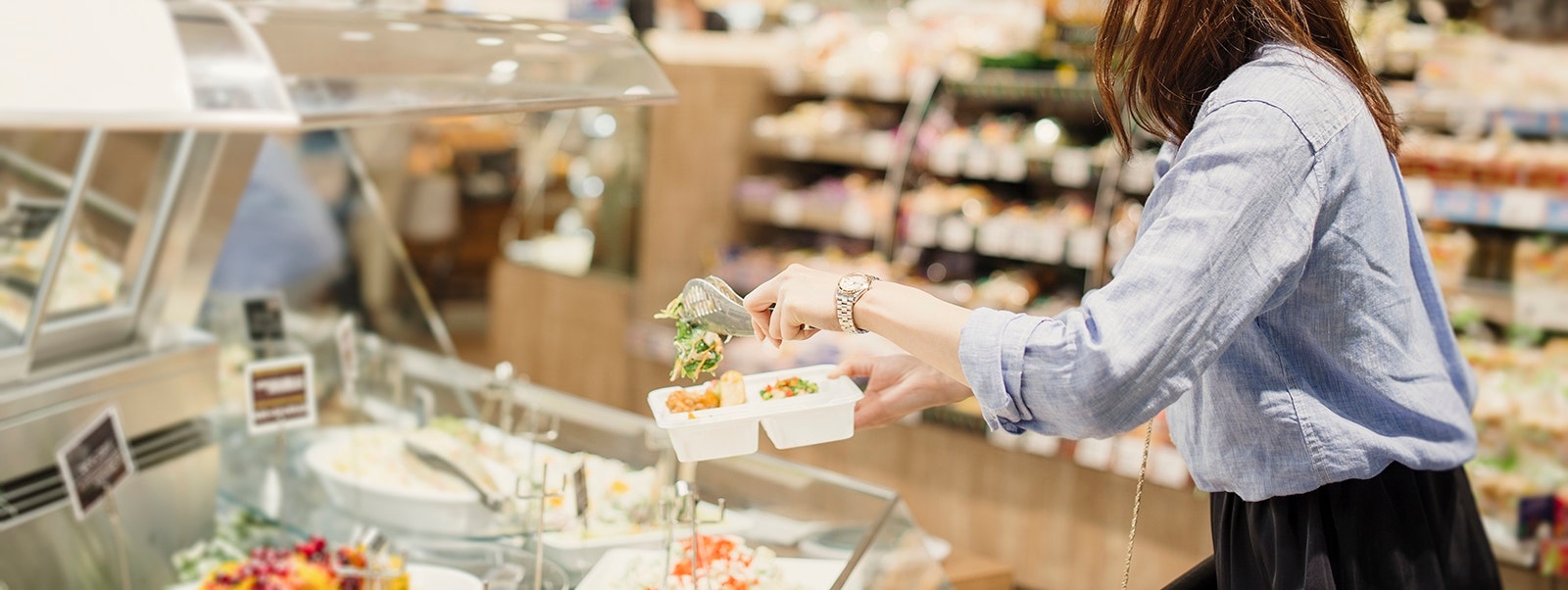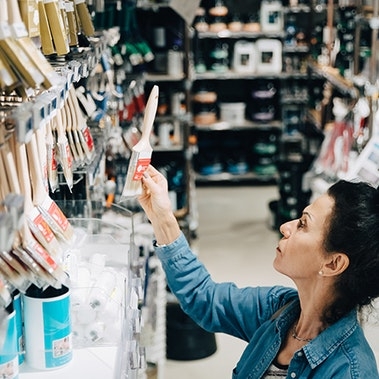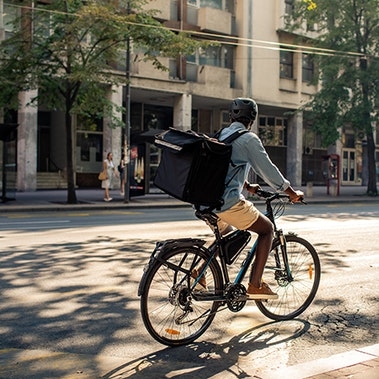When we published Retail’s Revolution in 2018, we thought we were describing digitization trends that would take hold from 2025 to 2030. Looking around, it’s clear we were nearly a decade too late in that assessment. What has changed?
COVID-19 increased the consumer demand for digital shopping as many consumers sheltered at home. Some retailers fell way to longstanding shifts in consumer preferences, such as casualization in apparel. Others naturally benefited from quarantine-driven consumer patterns such as cooking from home and a rise in demand for at-home fitness equipment.
The retailers who will recover most strongly are those who evolved to meet consumer demands by adapting their business model. The winners of Retail 2021 will be those who can enrich the digital experiences and thereby can avoid the risks of disintermediation we discussed in the report.
We interviewed three leaders in retail to get their perspective on strategies to find success amid COVID and what tomorrow’s winners are doing today: Mark Cosby, specialty retail CEO full interview in Curb(side) Your Enthusiasm. Richard Pennycook, former BRC chairman and Coop UK CEO interviewed in Supermarket's Strength During COVID-19. As well as Marc Poulin, the former CEO of Sobey’s, featured in Can the Grocery Boom Last?, full interview below.
Jim Bacos: Thank for you joining me today, Marc. Let’s talk a little about the retail landscape right now. Grocer's are doing pretty well - it's been Christmas every week for a long time. What is your take here? Can it last?
Marc Poulin: Thank you Jim. I'm very worried about the backlash for the grocers. The fact is that the customers are moving to smaller community stores and these stores get a 30 percent comp increase, while a big mega center gets maybe 10 percent or even less. Part of the problem is that a lot of the grocers have cut down on promotions just because they cannot get enough volume from the manufacturers to accommodate them or the logistics chains cannot support it. Part of it is also the fact that, in normal times, if I go to my local grocery store and I see a cut of meat is $18 at the counter, and I feel it's too expensive, I just don't buy it. And I may go into a discounter across the street or in another store where I can find it at $15 and I’m ok. Now because of the crisis, I'm going to buy it at $18, because I don't want to wait an hour to get into another store.
But that’s building resentment, and I think after the crisis it will be touchy for a lot of the people who are doing very well right now in sales and margins. I'm not sure a lot of these guys are thinking enough about it: how to give some of it back to the customers afterward, and how to retain some of the customers you've acquired to get through all of this.
Jim: Where do you see recent changes in behavior, on the side both of retailers and consumers, enduring long after the crisis has subsided?
Marc: I think it's an opportunity to rethink a little bit how you will market afterwards. A lot of retailers got rid of the paper flyer and now everything is electronic. But I'm not sure a lot of people are making efforts to maintain the flyer to only an electronic form. So there are a lot of things that are currently occurring that we knew would be occurring down the road, but it's just occurring a lot faster. And somehow the plans are not in place to sustain it afterwards or to make the transition.
E-commerce is an example - everybody's moving towards e-commerce, but nobody was ready for it to this degree. So now the question is: will retailers be able to maintain a significant chunk of the new customers and volumes they've acquired, or was the experience so bad for the customers that they will defect after the crisis? It's not clear. And I think part of it is dependent on how long this crisis lasts. If it lasts longer, the retailers will have time to adapt and provide a reasonable service. If we come out of the crisis sooner, before that happens, it may not be as good as it has been. I do think that quite a bit will last, though.
Everybody's moving towards e-commerce, but nobody was ready for it to this degree
Jim: Why will it last?
Marc: When we last talked about the future of retail, we said the barriers to e-commerce would slip away due to improvements in processes. And the three areas we discussed were that the customer interface would improve, automation and related systems similar would improve the picking part, and the logistics of transportation will be better handled and adapted. I think in this pandemic, obviously the two last areas have benefited immensely from the influx of volume. So the cost of picking is getting lower as soon as you hit the productivity threshold and if you organize yourself properly, you're there. Or at the minimum, you now have the volume to justify automation in lots of cases. So that accelerated that movement and basically reduced the perceived risk on decision-making faces. Do I go automated or not? It will not be a big fight to convince a lot of boards to go towards these kinds of solutions.
Delivery is influenced by density or the sheer number of deliveries in any given zone, so as the volume increases, cost per delivery drops. So the cost structure from a picking and a delivery point of view becomes, if handled right, a problem of the past – high volumes are now a given. I would argue that the pandemic accelerated that part of the equation quite a bit.
Now, the part that I don’t know if companies are working hard enough on is the customer interface. I’m not sure people are investing enough in this and understanding that it needs to get better. And in theory, I would argue the barriers to this one is also decreasing because what's going to improve customer interface is data. Now retailers are collecting a lot of data on their customers. So down the road, its going to be a positive push. But I'm just not sure companies are focusing on it yet. They are probably too focused on their logistics and not focused enough on their customer interactions.
Jim: I wanted to ask you whether your comments are primarily on groceries or looking at all of retail. Because I think there's a real difference between what's happening in grocery and non-grocery in the speed at which it will change.
Marc: I think it accelerates everything for everybody except that non-food retail was already ahead of the curve. All the non-food retailers will suffer to various degrees, and you will have so many limping retailers that the in-store experience may actually be worse than before. So in that regard, it pushes everybody beyond the cliff at the point of no return. We did mention it in Retail’s Revolution that when you reach that point, things start feeding on themselves. And I think what we're going to see is that retailers will not be in a position to rely on their traditional stores anymore.
And unfortunately, prior to the pandemic, they were already under pressure due to customers dynamics. Two years ago, they had to rush to adapt. Six months ago, they should have been panicking, but now they are just past that point. The ones that were not on that road to make things happen – I don’t know if they survive.
Jim: Well, you know, it's interesting because this is a theme that seems to be emerging from the conversations I've had around Retail’s Revolution and the pandemic. Initially, we said the Retail’s Revolution is happening over the course of five to 10 years, but now it looks to happen in the next six months.
Marc: This crisis emerged so rapidly that a lot of companies were, and will continue to be, unable to move at the pace customers want them to. That is a bad place to be. I think what you're going to see is probably either tech companies or IT companies acting as scavengers and taking advantage of the fact that a lot of those retailers are going to file for bankruptcy. And they will reshape the nature of those retailers by cutting drastically the number of stores while acquiring a key asset of value – namely, the ability of some of those retailers to curate assortment appropriately and have a better understanding on how to design a customer experience. Those are the two assets in my mind that remain in brick and mortar retailers, but I don't see most of that being able to take advantage of it fast enough unless there's new capital that comes in, and I only see new capital coming in through placeholder restructuring processes. And will that be enough? Will that be fast enough?
This crisis emerged so rapidly that a lot of companies were, and will continue to be, unable to move at the pace customers want them to
I think a lot of the survivors will be in the worst shape than the newcomers. And I think some of the retailers that survive this may actually end up in worse shape than those that get restructured. So you probably need some formula that will allow this to pass through the economy and that postpones this far enough in the future so that in the short term the survivors aren’t being hit twice – from the pandemic and then being hit during the recovery from the restructuring that will occur around them.
Jim: Ok, if I could focus a little bit on what might happen as a result of COVID but hasn’t happened yet. More than half of all meals consumed in the United States has been out of home dining and that has taken a huge chunk out of direct retail grocery. There are some people who think grocers should get into the meal provision business and the delivery of deals, because they have the kitchen, the food, and the ability to do this. And they can pull back some of the out of home dining because people, at least for the next year and maybe even longer, And that's an opportunity for grocery stores.
Marc: It is an opportunity and one we foresaw in Retail’s Revolution. We said that the store of the future was more convenient than the traditional grocer. The grocery store of the future will obviously have product where you can do things from scratch, but it will also be a corner where you can add the ability to eat on premise, have take-away meals, or meals that are pre-prepared to save customers time. That hasn’t changed, and, I think, will accelerate because now people understand you can get your basic groceries delivered to you, but the “what am I eating” tonight question will not be resolved. So that is where the grocery store will go in the future.
There has been a big debate on online grocery: is it store pickup or delivery. Maybe I'm a little bit too over promising here, but I think that the pandemic settles the issue. Is the winning model of the future a delivery model or a curbside pickup? I think a delivery model is going to be clear winner. It will be a winner from the consumer, and it's also a model that's a lot more scalable.
Jim: How will grocers handle the economics of the direct delivery to homes?
Marc: You avoid a lot of costs by avoiding the store. Curbside pickup is not that scalable. At one point, you have so much demand that you don't have enough slots to get your customers in and out fast enough, so you’re limited in the number of customers you can reach. Adding slots is very expensive as you don’t necessarily have the real estate for it. Delivery trucks are easier to scale. You just add more trucks and then your last mile is cheaper, because you have a lot more volume. You get a concentration of customers in the same neighborhood that allows you to amortize your costs. Because you move to a model where you've increased volume on the e-commerce by three, four, or five times – you've just created density. And on the other hand, the customers will prefer receiving the goods at home and they'll be there to receive it because they may be working from home more. The irritants of home delivery for groceries are greatly reduced. I think the winner in this one is generally home delivery.
Jim: What does that mean for the store estates? Will they become distribution centers?
Marc: The store becomes more of a fresh store focused on convenience. More eat on premise – you need a smaller store to achieve that, and it will be more community-based. If people have a lot more freedom without a commute you may go to your local store for quick in-and-out more often. But you're not going to go to the big stores because of it. Going forward, your center store will be very convenience- focused.
Jim: What do you think are going to be the societal impacts of this very rapid change towards a greater online direct delivery world? If we begin to change the role of the grocery, don't we change the role of labor within the grocery, and how big an impact will that have?
Marc: Grocery was moving towards automation - that's going to keep going. You'll need a kind of labor that may be more like restaurant-labor, where there is going to be a lot more-high touch with the product. Another impact is you’ll see grocers and fulfillment centers getting more in line together for the non-grocery. There’s going to be linkages between grocers and non-grocery that's we're not seeing now, which we’re going to see a lot more of. I wouldn't be surprised if some of the companies who will be scavengers of non-retail may be grocers, because they will look at the data, the brands, and recognize that, when building fulfillment centers for grocery, it's not that complicated to add non-food retail products to the order too. So these kinds of assets will be of interest to grocers because they will be building infrastructure for fulfillment of the grocers and it will be easy to add non-food boutiques to that infrastructure.
Jim: Thank you for taking the time to speak with us.
Marc Poulin, former CEO of Sobeys – Marc Poulin is a high-level manager in the Canadian food industry. Under his leadership, Sobeys has consolidated its position as the second-largest food distributor/retailer in Canada leading Canadian grocery retailer and food distributor.




